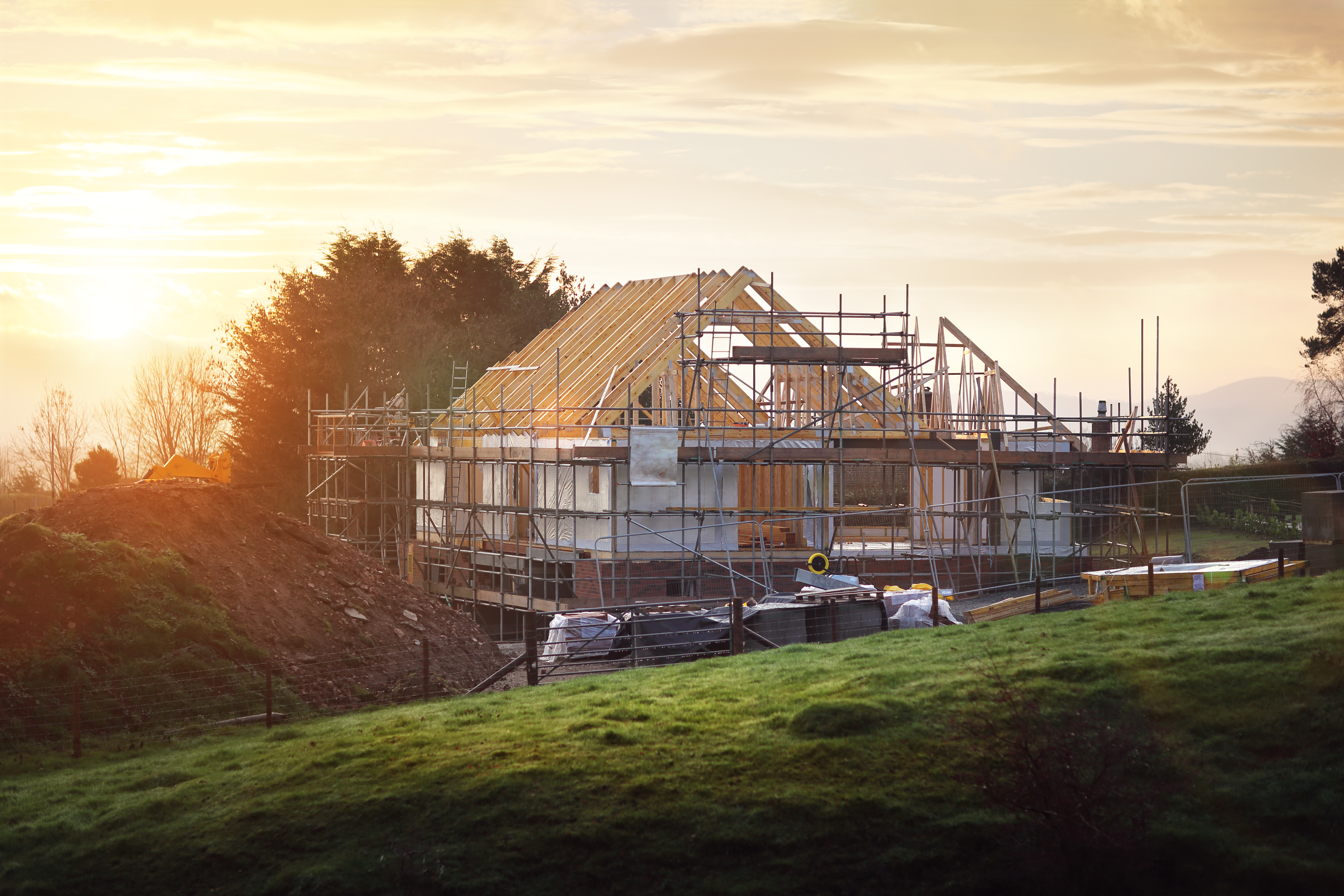

2021 has been an eventful year for the planning sector, with major shake-ups including significant changes to the Use Classes system, an increase in permitted development rights and a revised NPPF – and that’s all in advance of a Planning Bill promised later in the year.
Added to that, two significant policy changes this summer will
have a major impact on future residential development.
First Homes are subject to a restriction, to be secured by a Section 106 agreement, also requiring future sales to be subject to the same (or higher) discount and allocation criteria, which may be added to by the local authority.
Currently national planning policy requires that at least 10% of homes on a new scheme is affordable housing. Within this, local authorities set local tenure mix requirements – typically 70-80% rent and 20-30% shared ownership.
Transitional arrangements have been put in place to avoid complications for development schemes for which tenures have been agreed.
But how will schemes be affected longer term? From a development perspective, cash flow is an immediate concern. Previously, affordable housing units were sold upfront to a housing association or council, but First Homes are sold on the open market. So any weak demand for this new tenure type could create uncertainty for the developer. And there is a grey area in the case of unsold units, particularly if there is demand from Registered Providers for homes to let.
Secondly, First Homes may result in a redistribution of house types and sizes, because First Homes may attract purchasers who would otherwise have bought a similar unit on the open market.
At the time of writing, nothing other than potential policy. But as this Government has shown repeatedly, it is not slow to bring about change. In August, it welcomed an Independent review into scaling up self-build and custom housebuilding and publicised its intention that up to 40,000 new homes each year are to be self and custom build (CSB). This three-fold increase on existing levels of self-build would represent at least 10% of the Government’s target of 300,000 new
homes built per annum.
As the terminology suggests,
a developer would have no involvement in a self-commissioned home. Custom-build homes, on the other hand, could involve individuals purchasing land from a developer on a consented scheme, or purchasing the plot and shell but customising the internal layout, fixtures and fittings and perhaps making changes to the exterior.
What do residential developers need to know about recent policy changes?
“The First Homes policy requires that a minimum of 25% of the affordable housing must comprise First Homes, alongside homes for social rent as set out in the local plan.”
“It is not necessarily the ‘evenness’ of a development that allows for accelerated absorption rates, but building an appropriate mix to meet the demands in a specific location.”
"Currently national planning policy requires that at least 10% of homes on a new scheme is affordable housing."
Colin Brown
Head of Planning & Development
Colin is a Partner and Head of Planning & Development at Carter Jonas. He has over 30 years’ experience of planning consultancy and has worked on broad selection of significant planning applications and appeals. He currently acts for a wide range of private, institutional and developer clients.
About our professionals
Sign up to receive content like this directly to your inbox













A third issue is viability, as with discounts of up to 50%, units may sell at a level below that which a Registered Provider would have paid.
But it’s not all bad news. The new policy allows for Exception Sites: sites which deliver only First Homes but which, are exempt from other policies. This presents the opportunity for landowners, in specific circumstances, to maximise the value of unallocated land and presents new opportunities to developers.
First Homes is a stronger and bolder initiative than any previous first-time buyer initiative and can potentially go a long way in addressing an important issue – although tweaks to policy are likely to be required.
A new form of affordable housing, First Homes, came into effect on 28 June. This provides a minimum 30% discount on new properties, which must be priced no higher than £250,000 post-discount (£420,000 in London).
Eligible purchasers must have a joint household income of no more than £80,000 (£90,000 in London). There is no age restriction, but buyers must have a local connection (apart from active members of the Armed Forces). Again, a s106 will ensure that these restrictions are applied to the property at each future sale.
The First Homes policy requires that a minimum of 25% of the affordable housing must comprise First Homes, alongside homes for social rent as set out in the local plan.



COLIN BROWN
Head of Planning & Development
Colin is a Partner and Head of Planning & Development at Carter Jonas. He has over 30 years’ experience of planning consultancy and has worked on broad selection of significant planning applications and appeals. He currently acts for a wide range of private, institutional and developer clients.
About our professionals
Colin Brown, Head of Planning & Development, considers the answer to this essential question.
First Homes: what’s changed?
First Homes: impact on development
At the time of writing, nothing other than potential policy. But as this Government has shown repeatedly, it is not slow to bring about change. In August, it welcomed an Independent review into scaling up self-build and custom housebuilding and publicised its intention that up to 40,000 new homes each year are to be self and custom build (CSB). This three-fold increase on existing levels of self-build would represent at least 10% of the Government’s target of 300,000 new homes built per annum.
Self and Custom Build Homes: what’s changed?
As the terminology suggests,
a developer would have no involvement in a self-commissioned home. Custom-build homes, on the other hand, could involve individuals purchasing land from a developer on a consented scheme, or purchasing the plot and shell but customising the internal layout, fixtures and fittings and perhaps making changes to the exterior.
Ultimately the impact of the change will rest on the definitions of ‘self’ and ‘custom’ build. Custom-built homes can be included in a large-scale scheme with housebuilders retaining control over everything from design to completion dates. Self-builds, if incorporated into residential developments, could create logistical complications, aesthetic inconsistency, and damage market perception.
But looking on the bright(er) side, this presents an opportunity for specialist SME developers and those using MMC to increase their market share.
But this falls outside the processes by which volume housebuilders operate and could potentially throw a spanner into the well-oiled machine.
Self and Custom Build Homes:
impact on development
What does the future hold for residential developers?
A move towards CSB may address the over-provision of ‘identikit’ housing schemes but many question its ability to boost capacity and overall housing supply (among other concerns) and fear that it will only exacerbate the housing crisis.
The benefits of the changes must be finely balanced against the drawbacks, and the necessary revisions made.

“Self-builds, if incorporated into residential developments, could create logistical complications, aesthetic inconsistency, and damage market perception.”





Colin Brown, Head of Planning & Development, considers the answer to this essential question.



FIRST HOMES:
WHAT'S CHANGED?
FIRST HOMES:
WHAT'S CHANGED?
FIRST HOMES:
IMPACT ON DEVELOPMENT
Self and Custom
Build Homes:
what’s changed?
Self and Custom
Build Homes:
impact on development

But this falls outside the processes by which volume housebuilders operate and could potentially throw a spanner into the well-oiled machine.
Ultimately the impact of the change will rest on the definitions of ‘self’ and ‘custom’ build. Custom-built homes can be included in a large-scale scheme with housebuilders retaining control over everything from design to completion dates. Self-builds, if incorporated into residential developments, could create logistical complications, aesthetic inconsistency, and damage market perception.
But looking on the bright(er) side, this presents an opportunity for specialist SME developers and those using MMC to increase their market share.
What does the future hold for residential developers?
A move towards CSB may address the over-provision of ‘identikit’ housing schemes but many question its ability to boost capacity and overall housing supply (among other concerns) and fear that it will only exacerbate the housing crisis.
The benefits of the changes must be finely balanced against the drawbacks, and the necessary revisions made.
Sign-up for the latest news

Sign-up for the latest news
